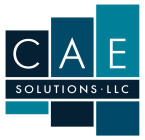Effective businesses set goals. We’ve heard forms of the phrase “what gets measured gets done”, and this is true for achieving those goals.
Today I’d like to share my favorite goal-tracking tool: the funnel.
Picture a funnel: wide at the top, narrowing to a concentrated opening at the bottom. For sales- or recruitment-oriented businesses this is one of the best tools for tracking goal progress. Here’s how…
The funnel starts with an understanding of how many inputs need to go in to eventually lead to enough sales to achieve a revenue goal. Next, you must understand the number of points where the funnel narrows, what happens at those points, and how many of the original input group you still need at each of those points. From there, simply set your targets for each stage of the funnel and get to work.
Sound too simple? That’s because it is. The only other key is that it’s easier to plan the funnel backward by starting with the narrowest point’s goal and working back up.
Take a sample business. Their goal is to make ten sales. Their funnel process is to identify warm leads on prospective customers, meet those leads for qualifying meetings, and submit a sales proposal to those prospects.
Historically, this company has closed 80% of its proposals, submitted proposals to 80% of the prospects they meet, and secured meetings with 50% of the warm leads. If their goal is ten new customers, then we do some simple math:
- 10 is 80% of 12.5. Assuming we won’t meet with a half customer, we’ll round up to 13. So, 13 proposals need to be submitted based on historical close rates.
- 13 is 80% of 16.25. Assuming we won’t meet with a quarter customer, we’ll round up to 17. So, the company needs to meet with 17 prospects who would likely entertain a proposal submission.
- 17 is 50% of 34. So, the company needs to generate 34 warm leads of prospective clients with whom they could possibly meet to discuss their products/services.
- Reverse that process to align with the top-down funnel and we get: 34 leads, moving 17 of those to prospect meetings, sending proposals to 13 of those, and closing 10 proposals for 10 new customers.
Salespeople talk about the sales “pipeline”. I prefer the funnel. The visual works better, the backward planning is clearer, and the results are more consistent.
And if you’re not a sales manager…this works for HR recruiting new employees, for educators recruiting students to a school or a program, and for marketers planning to reach targets for different media.
If this rings true with you, try some backward funnel planning, implement it for 3-4 months, and see what happens.
Want these blog posts delivered straight to your inbox each week? Click here to subscribe.
Follow us on social media at the links below.




